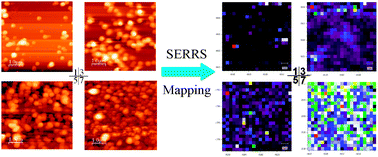Silver nanoparticles self assembly as SERS substrates with near single molecule detection limit
Abstract
Highly sensitive

- This article is part of the themed collections: New frontiers in Surface-Enhanced Raman Scattering and Web Collection: Surface-Enhanced Raman Scattering (SERS)

 Please wait while we load your content...
Please wait while we load your content...